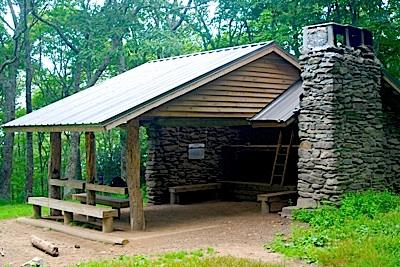
While a backcountry use fee might help meet a small portion of Great Smoky's bills, a better solution is a park entrance fee/Kurt Repanshek
In a 25-page motion attacking not just the propriety but also the legality of a backcountry user fee at Great Smoky Mountains National Park, a group of backpackers has not only asked that the fees be tossed out, but shined some light on the conundrum of how to afford our public lands.
The overwhelming dilemma here is not that backcountry users have to pay $4 a night, with a maximum fee of $20 for one trip, but rather that the National Park Service has its hands legislatively tied in its efforts to meet the needs of one of the most popular national parks. Politicians seem quick to oppose the fee but not as quick to solve the problem.
The lawsuit (attached below) makes accusations about how the staff of the park, under former Superintendent Dale Ditmanson, went about building its case for the user fees. Among the charges is that the staff concocted complaints about the existing backcountry reservation system, that minutes of public meetings were missing from the administrative record, and that some staff discussions of the matter were conducted on private, not government, email accounts. It also argues that federal regulations prohibit fees for backcountry campsites unless they come with "drinking water, access, road, refuse containers, toilet facilities ... (and) reasonable visitor protection," none of which exist, short of privies, in the park's backcountry.
More so, the lawsuit, contends that federal law prohibits the National Park Service at Great Smoky from charging "an entrance or standard amenity recreation fee ... unless fees are charged for entrance into that park on main highways and thoroughfares."
Southern Forest Watch, which brought the lawsuit, also contends that "(A) 25 percent drop in backcountry camping (from 84,236 in 2012 to 62,863 the following year) since full implementation of this fee is dramatic evidence that this fee has impaired this generation's use of the Smoky Mountains ... "
In February 2012, Superintendent Ditmanson told the Traveler that, faced with an inadequate budget and unable to charge an entrance fee for any of his roughly 9 million yearly visitors, he saw no way of improving visitor services and protecting backcountry resources without charging users who spend the night in the woods.
The solution would seem to lie with those political entities that have sided with Southern Forest Watch in its anti-fee fight: the speaker of the Tennessee House of Representatives, the Knox County (Tennessee) Commission as well as county officials in Bradley and Blount counties in Tennessee and Swain County in North Carolina. Rather than simply opposing the backcountry fees, these politicians should work to overturn the prohibition on entrance fees to Great Smoky, or to pressure Washington to better fund the Park Service. Or both.
Similar support should be sought from U.S. Sen. Lamar Alexander, R-Tennessee, who in the past has been honored by the National Parks Conservation Association for his pro-Park Service stances. Moving to shore up financing for Great Smoky Mountains specifically, and the National Park Service in general, would burnish that William Penn Mott Jr. Park Leadership Award he received from the NPCA in 2007 for opposing drastic changes to the Park Service's Management Policies and the costly "Road to Nowhere."
This is not to wholeheartedly endorse fees in the parks across the board. But when entrance fees are charged at one-third of the 401 units of the National Park System, and put to good use in improving the parks for the visitors' benefit, the longstanding ban against such a fee at Great Smoky is an anachronism in this day of scarce federal funds.
While recreation fees are generally unsavory, if there are to be fees, the Smokies would benefit much, much more from a $10-$20 per car fee from the millions who enter the park and exert considerable wear and tear on not only roads but also frontcountry facilities each year than from a $4 per night fee on 65,000 backcountry campers who sleep on the ground and walk down a path.



Comments
The commerce that flows on Newfound Gap road today is casino traffic heading to the Gatlinburg/Pigeon Forge bacchanal. A good story for this magazine would be to try and tease out the "real" visitors to the Smokies. 9 million automobiles and probably less than a tenth of a percent actually get out of their cars and visit the National Park. It is a numbers game employed with great proficiency by park managers when the dollar machines get cranked up. And that is why there won't be an entrance fee at GRSM. Sevier County merchants wouldn't allow it. The first person to suggest that will be run out of town on a rail just like Superintendent Dale Ditmanson after the embarrassment he received at the hands of the Blount Commission who condemned this backcountry fee by resolution. Funny every time I mention dishonest Dale's dealings in the Smokies some new poster shows up here in 3, 2,1....................
It would more than likely still be the most visited true National Park in the system, just by the population statistics that surround the park. While the casino and Dollywood are part of the draw to the region, those are just components to the overall regional tourist experience In the Smokies, not the entire makeup by any means.